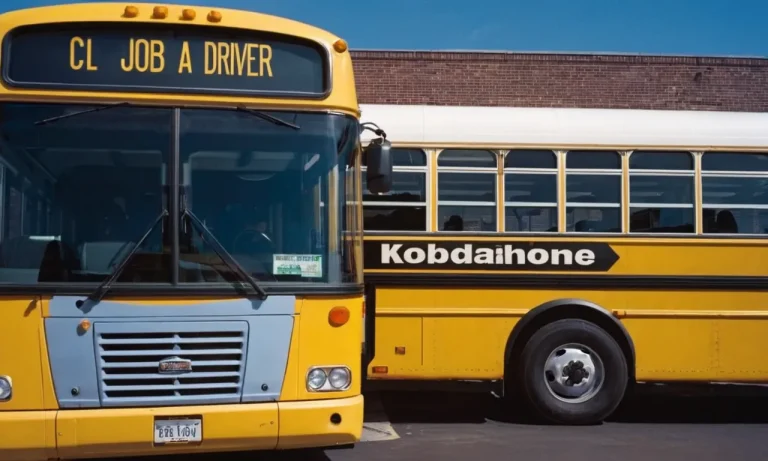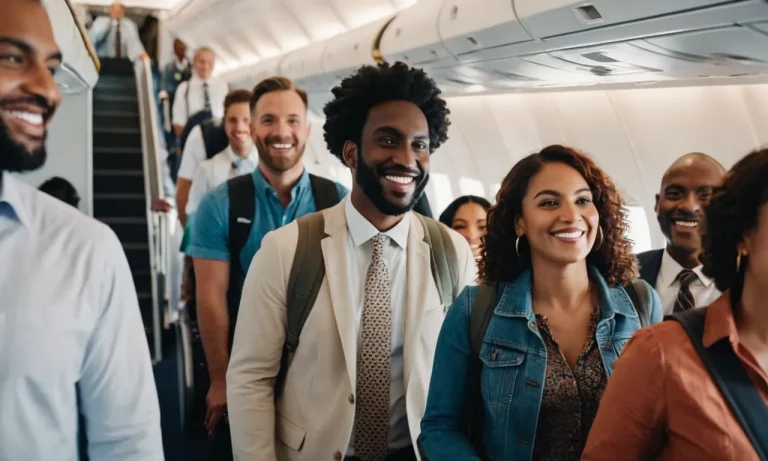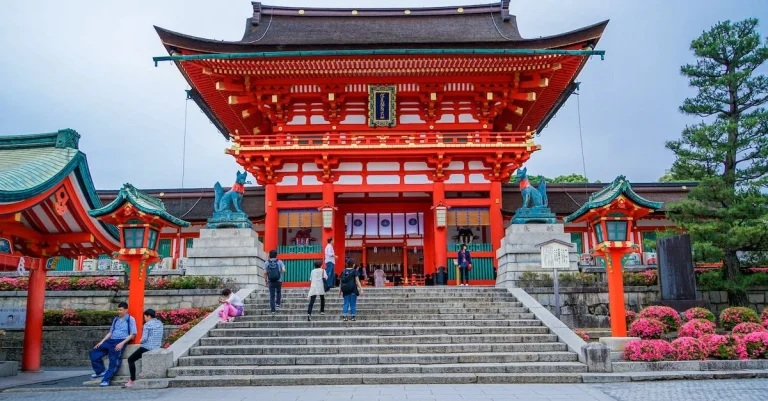Smoking on airplanes has been banned in the United States for over 30 years, but some passengers still try to sneak a cigarette, putting themselves and others at risk. If you’re caught smoking on a plane, you could face serious fines and even jail time.
Keep reading to learn more about the rules against smoking on airplanes and what penalties you might face if caught lighting up mid-flight.
If you’re short on time, here’s the quick answer: In the United States, the fine for smoking on an airplane can be up to $4,000 per offense and repeat offenders may face jail time.
The specific penalties depend on factors like which airline you’re on and whether you tamper with the airplane’s smoke detector.
History of Banning Smoking on Airplanes
When smoking was first banned:
Smoking on airplanes was once a common practice, with passengers freely lighting up during flights.
However, as awareness of the health risks associated with smoking grew, so did the push for a ban on smoking in public spaces, including airplanes.
These airlines designated certain sections of the aircraft as non-smoking areas, allowing passengers to choose between smoking and non-smoking seating.
This marked the beginning of a gradual shift towards completely smoke-free air travel.
Health and safety issues with smoking on planes:
The decision to ban smoking on airplanes was primarily driven by concerns over the health and safety of passengers and crew members.
Secondhand smoke, which contains over 7,000 chemicals, including at least 70 known carcinogens, poses significant health risks to those exposed to it.
In the confined space of an airplane cabin, where air is recirculated and ventilation is limited, the dangers of secondhand smoke are amplified.
Non-smoking passengers, including children, pregnant women, and individuals with respiratory conditions, were particularly vulnerable to the harmful effects of secondhand smoke.
Furthermore, smoking on airplanes also posed a fire hazard. Cigarette butts, if not properly extinguished, could easily ignite flammable materials on board, potentially leading to a catastrophic fire.
In fact, there have been several incidents in the past where smoking-related fires on airplanes caused fatalities and injuries.
Rules Against Smoking on Airplanes Today
Smoking on airplanes has been strictly prohibited for several decades now, with both federal regulations and individual airline policies in place to enforce this ban.
The Federal Aviation Administration (FAA) plays a crucial role in ensuring the safety and well-being of passengers by implementing and upholding regulations that prohibit smoking on all commercial flights.
FAA regulation banning smoking
The FAA implemented a regulation in 1988 that banned smoking on all domestic flights within the United States.
This regulation was put into effect due to the growing awareness of the health hazards associated with secondhand smoke and the need to provide a smoke-free environment for all passengers.
Since then, smoking has been strictly prohibited on all flights operated by U.S. airlines, regardless of their destination.
The FAA regulation also extends to international flights operated by U.S. airlines, as well as to foreign carriers flying into or out of the United States.
This means that even if a foreign airline allows smoking on their domestic flights, they must comply with the FAA’s regulation once they enter U.S. airspace.
Airline policies prohibiting smoking
In addition to the FAA regulation, individual airlines have their own policies in place to prohibit smoking on their flights.
These policies are often more stringent than the FAA regulation and may include penalties for passengers who violate the smoking ban.
Most airlines clearly state their smoking policy on their websites and inform passengers about the consequences of smoking onboard.
This includes the possibility of fines, removal from the flight, and even legal action in some cases.
Passengers found smoking on an airplane may be subject to various penalties, depending on the airline’s policy.
These penalties can range from fines of several hundred dollars to being permanently banned from the airline.
Some airlines may also report incidents of smoking to the FAA or other relevant authorities, which could result in further legal consequences for the offender.
It is important for passengers to be aware of and adhere to these rules and regulations to ensure a safe and pleasant flying experience for everyone on board.
The strict enforcement of the smoking ban on airplanes has greatly improved the air quality and overall comfort for passengers, making air travel a more enjoyable experience for all.
Fines and Jail Time for Smoking on a Plane
Smoking on an airplane is a serious offense that can result in significant fines and even jail time.
Airlines and regulatory authorities have strict policies in place to ensure the safety and comfort of all passengers onboard.
Let’s take a closer look at the penalties that smokers may face if caught lighting up during a flight.
Typical fines from airlines
Airlines take smoking on a plane very seriously and have their own set of penalties for such infractions.
Violators can expect to face hefty fines, which can range from a few hundred to several thousand dollars, depending on the airline and the severity of the offense.
These fines are meant to discourage smokers from engaging in this dangerous behavior and to compensate the airline for any inconvenience caused to other passengers.
FAA civil penalties
In addition to the fines imposed by individual airlines, the Federal Aviation Administration (FAA) has the authority to levy civil penalties against individuals who smoke on an aircraft.
The FAA’s penalties can be even more severe, with fines reaching up to $25,000 per violation.
These penalties are intended to serve as a deterrent and to ensure compliance with federal aviation regulations.
Possibility of criminal charges
In some cases, smoking on a plane may even result in criminal charges. While this is relatively rare, it can happen if the smoker’s actions endanger the safety of the aircraft or other passengers.
Criminal charges can lead to more severe consequences, including jail time and a permanent criminal record.
It is crucial to understand that smoking on a plane is not only a violation of airline policies but also a potential breach of federal laws.

How Smoking Violations Are Detected and Enforced
Smoking on an airplane is strictly prohibited due to safety concerns and the potential for fire hazards. To ensure compliance, various measures are in place to detect and enforce smoking violations.
Smoke detectors and other sensors
Modern aircraft are equipped with highly sensitive smoke detectors and other sensors designed to detect any signs of smoke or fire.
These detectors are strategically placed throughout the cabin and are capable of quickly identifying even the slightest hint of smoke.
Once triggered, they alert the flight crew, allowing them to take immediate action.
In addition to smoke detectors, airplanes also have sophisticated air quality monitoring systems. These systems continuously monitor the cabin air for any changes in air composition that may indicate the presence of smoke.
If smoke is detected, the system can pinpoint its source, ensuring a swift response.
Flight attendants and air marshals
Flight attendants play a vital role in detecting and enforcing smoking violations on airplanes. They are trained to be vigilant, constantly keeping an eye out for any suspicious behavior or signs of smoking.
If a passenger is found smoking, flight attendants are responsible for intervening and ensuring that the violation is addressed.
Additionally, some flights may have air marshals on board – undercover law enforcement officers who are trained to blend in with passengers.
Air marshals are specially trained in identifying and handling security threats, including smoking violations.
They work discreetly to maintain the safety and security of the aircraft and its passengers.
Consequences for tampering with smoke detectors
Tampering with smoke detectors on an airplane is a serious offense. Not only is it a violation of aviation regulations, but it also poses a significant safety risk.
Airlines take tampering with smoke detectors very seriously and have strict consequences in place for those who engage in such behavior.
Consequences for tampering with smoke detectors can range from hefty fines to criminal charges.
Airlines may impose fines of up to several thousand dollars on passengers who tamper with smoke detectors.
In severe cases, individuals could face criminal charges, which may result in imprisonment and further legal consequences.
It is important to note that tampering with smoke detectors is not only illegal but also endangers the lives of everyone on board.
The consequences of smoking on an airplane and tampering with smoke detectors can have far-reaching and potentially devastating consequences.
Therefore, it is crucial for passengers to adhere to the strict no-smoking policy and respect the safety regulations in place.
Steps To Take If You See Someone Smoking
Inform a flight attendant immediately
If you notice someone smoking on an airplane, it is crucial to act promptly by informing a flight attendant.
Smoking on an aircraft is not only against the law but also poses a significant risk to the safety and well-being of all passengers.
Flight attendants are trained to handle such situations and will take immediate action to ensure the smoker is stopped and the situation is resolved.
A quick response can help prevent any potential harm and maintain a safe environment for everyone onboard.
Record details as evidence
While you wait for the flight attendant to handle the situation, it is a good idea to gather as much information as possible to serve as evidence.
Take note of the smoker’s seat number, appearance, and any other relevant details that may assist the authorities in identifying the individual.
Additionally, if you feel comfortable doing so, discreetly capture photos or videos of the incident. This evidence can be valuable if further action needs to be taken, such as reporting the incident to the airline or authorities.
Cooperate with airline staff and authorities
After informing a flight attendant and providing them with the necessary details, it is essential to cooperate fully with the airline staff and any authorities involved.
They will handle the situation according to the airline’s policies and applicable laws.
It is important to remain calm and patient throughout the process, as the resolution may take some time.
By cooperating with the airline staff and authorities, you are helping to ensure that appropriate actions are taken against the smoker and that the safety of all passengers is maintained.
Conclusion
Smoking on commercial flights has been banned for decades now for good reason – it’s a serious health and safety issue.
If you violate the smoking rules, even just by lighting up quickly in the bathroom, you could face stiff fines of up to $4,000 or more.
Tampering with smoke detectors could lead to criminal charges. If you see someone smoking mid-flight, inform the flight crew immediately and let the proper authorities handle it.






